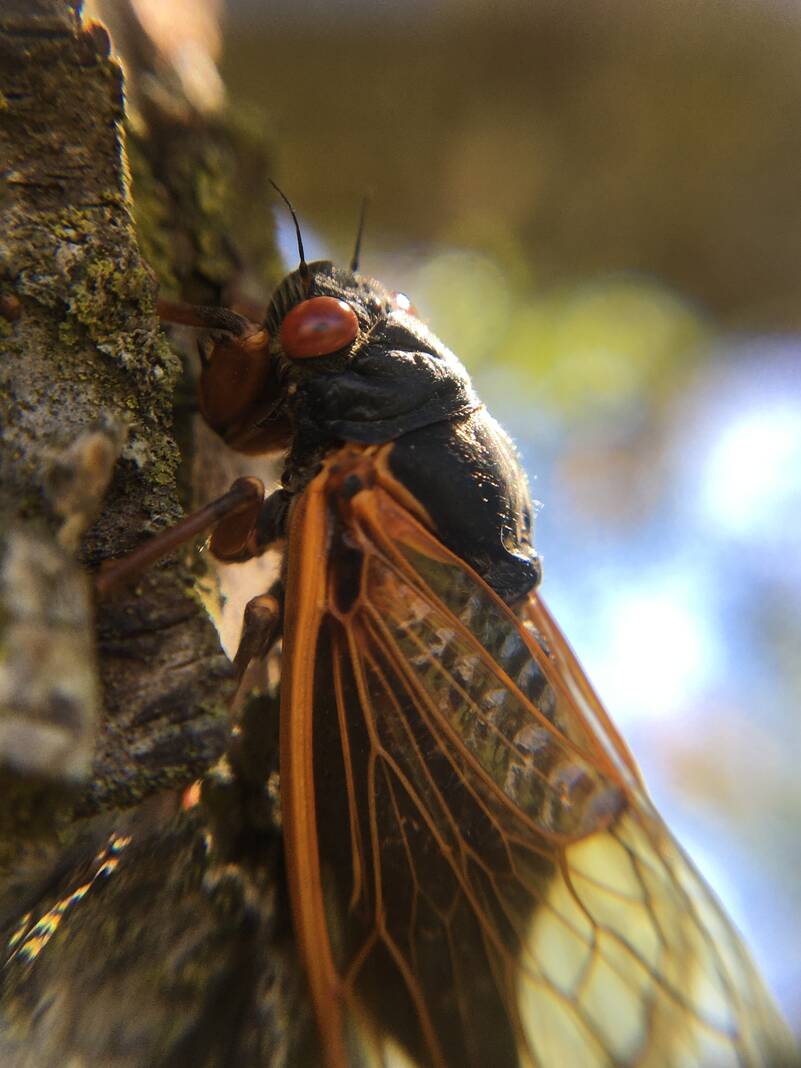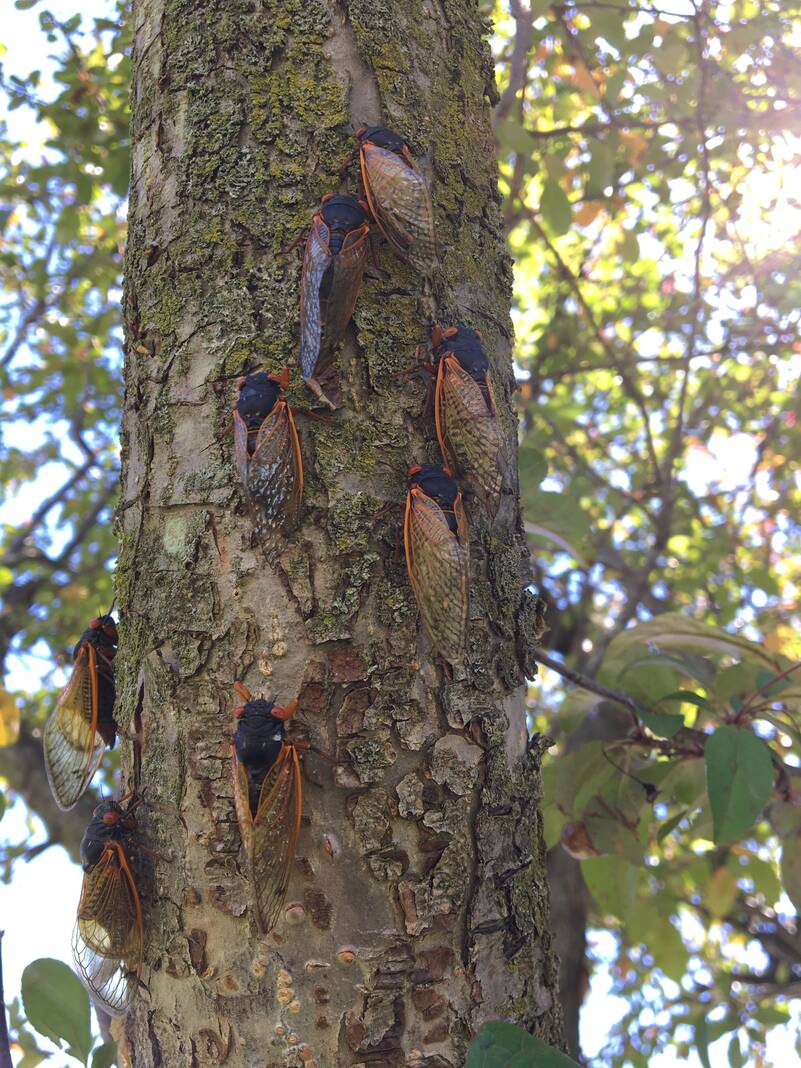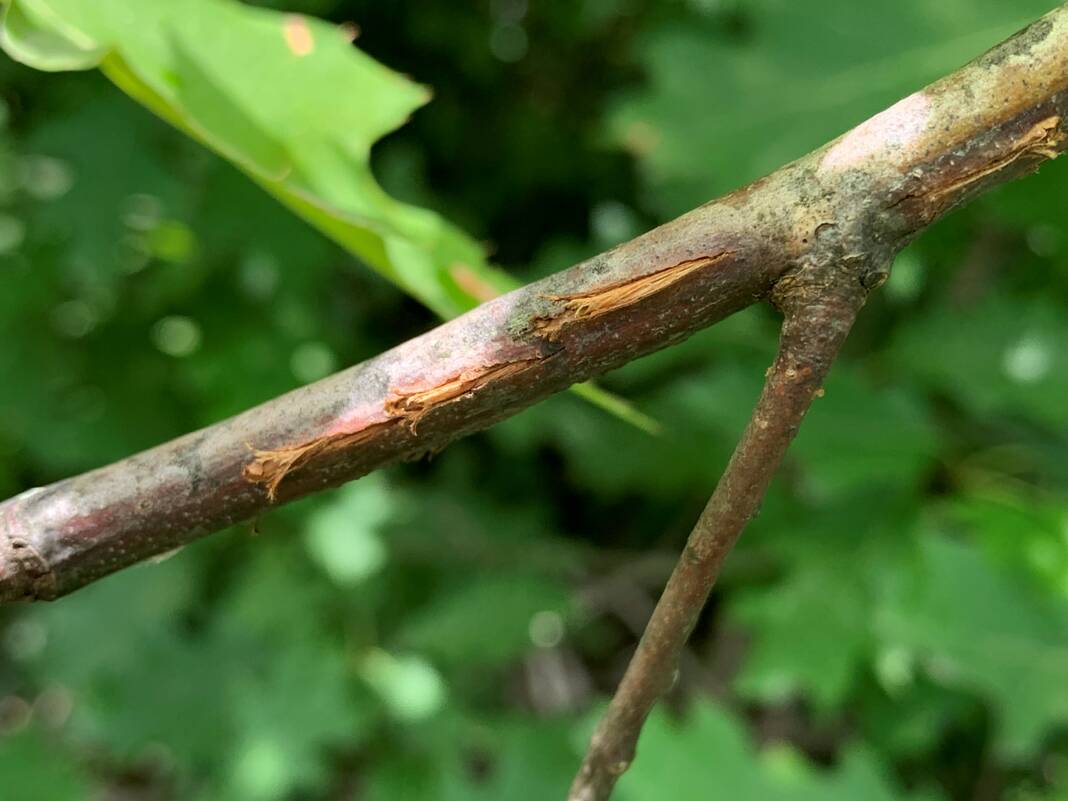
Periodical Cicadas are known for their brown and yellow coloring.

Be prepared to see these little beauties on every tree during the end of April and May.

Cicadas can cause damage to sapling trees by laying their eggs in the new growth. They will pierce holes in the shoots, it is not very dangerous to older trees, but people can protect their young trees by wrapping them in nets to keep the cicadas away.
Get ready, Brown County. Cicadas are back and noisier than ever.
They’re known as a cacophony of noise, terrorizing woods, cities and towns, but could they also be considered a … wonder?
Two separate broods of periodical cicadas will be emerging and laying eggs throughout southwest and northwest Indiana this spring and summer. Periodical cicadas only emerge every 13 or 17 years.
Megan Abraham, the State Entomologist with the Department of Natural Resources told the Democrat that the department is excited because these two broods do not typically emerge at the same time. Brood 13 has a 17-year cycle and brood 19 has a 13-year cycle.
Cicadas spend nearly their entire life cycles burrowed underground feasting on plant roots. Once it’s showtime, they emerge, reproduce and die, leaving behind the eggs of future generations.
But how do they tell time?
How does every cicada in a brood know when to emerge?
Abraham told the Democrat that they suspect cicadas can tell time based on the sugar content of plant roots and how they change from year-to-year. As trees pass through their seasonal cycles, losing leaves, growing new leaves and losing them again, the composition of the sap changes. However, she said that there is no specific scientific theory that has been proven to explain their internal clocks.
“Typically we see cicadas emerging once the top eight inches of soil reaches 68 degrees,” Abraham said.
“It’s usually around a big rain, when the soil gets softer. They climb up a vertical structure – a tree – break out of their shells and fly.”
She said that there are more than 190 different types of cicadas in the United States and over 3,000 worldwide.
Southwest Indiana is expected to see brood 19, while brood 13 will likely spread across the northwest. Abraham advised people to visit the website cicadamania.com to see what broods are expected to appear in their area. Once they make their journey aboveground, their lifespan are typically only between 10 and 14 days. This gives them enough time to fly around and reproduce.
“They all (males) make noise and they are going to be singing,” Abraham said.
She also said that there are four subspecies within each brood and females can differentiate between the songs of her subspecies versus others.
And who said romance was dead? It’s just underground.
Abraham told the Democrat that cicadas do not pose any potential threat to people or animals, but plant parents should take caution because young sapling trees might face their wrath.
“Other than making a heck of a lot of noise, there’s not much they do,” Abraham said. She added, “Females will lay eggs in new growth of trees and poke holes in the shoots. You will see browning of leaves but it is not dangerous, especially for larger trees.”
She said that small or underdeveloped trees would be more at risk and people can cover them in netting to prevent females from laying eggs.
They are prey, however, to birds who feed on cicadas. After a season with a large cicada population an area might see an influx of local birds within the next year.
Abraham said that cicadas are also attracted to weird noises, specifically that of machinery. People should not be alarmed if cicadas appear to chase them when mowing or trimming.

